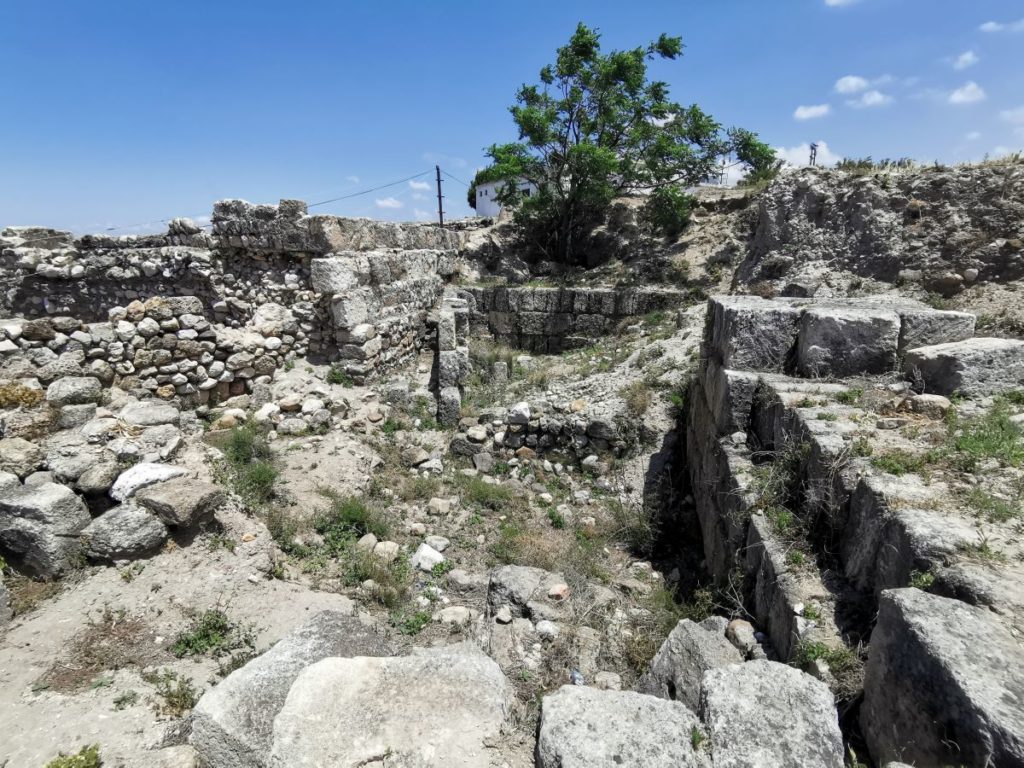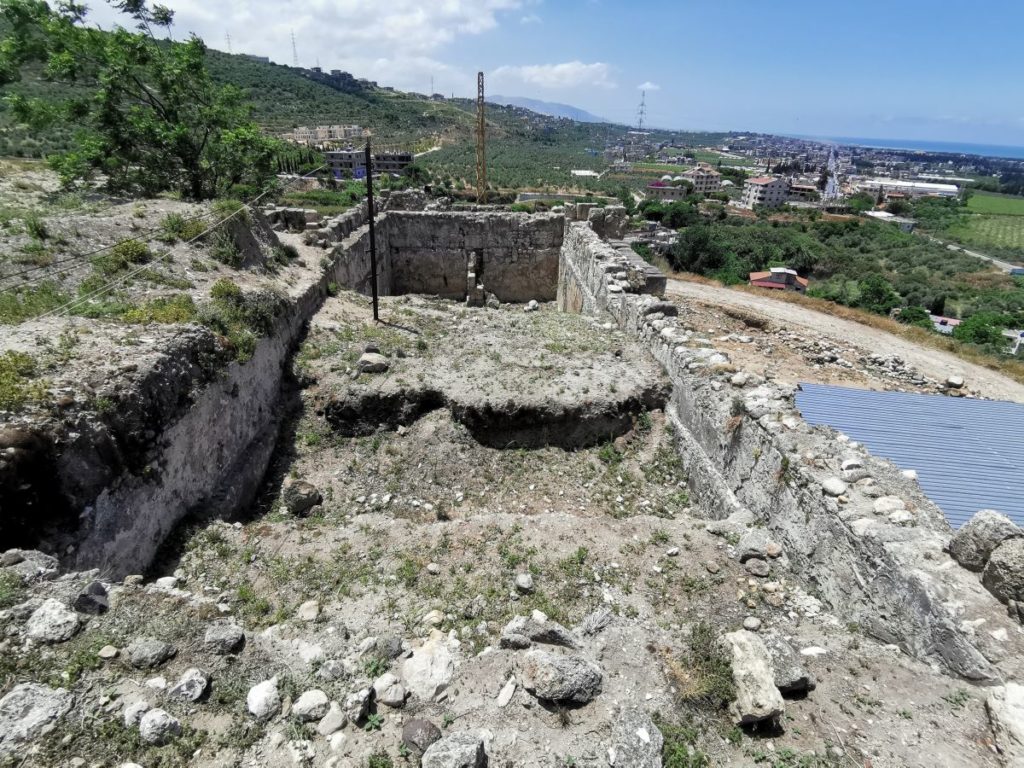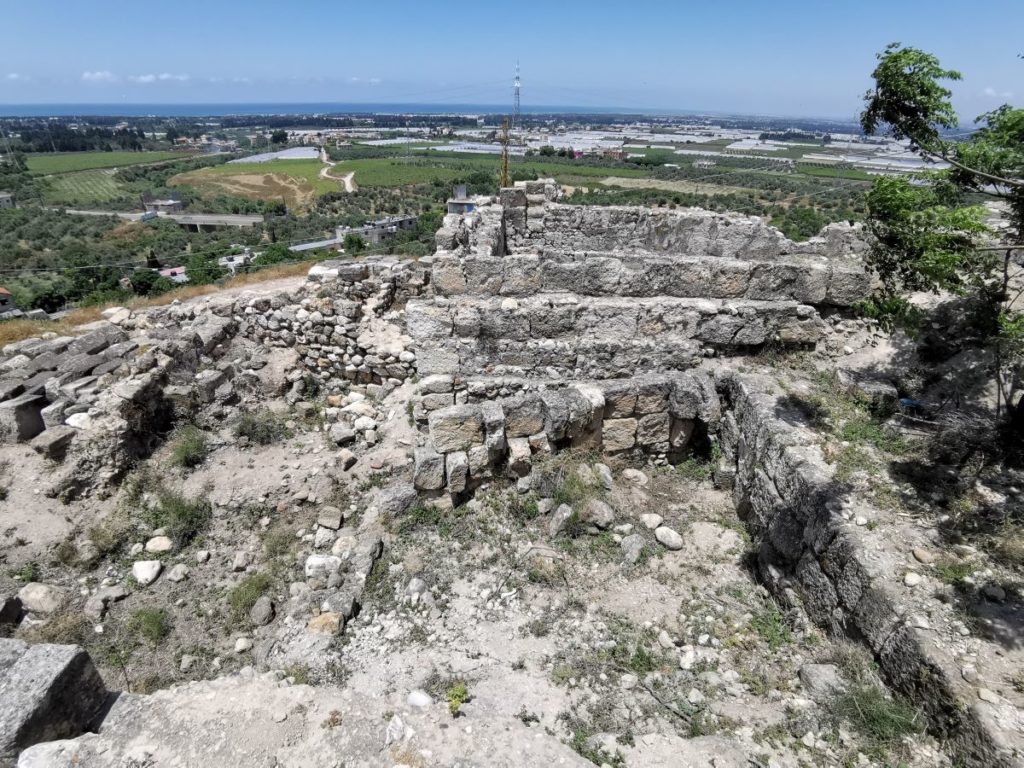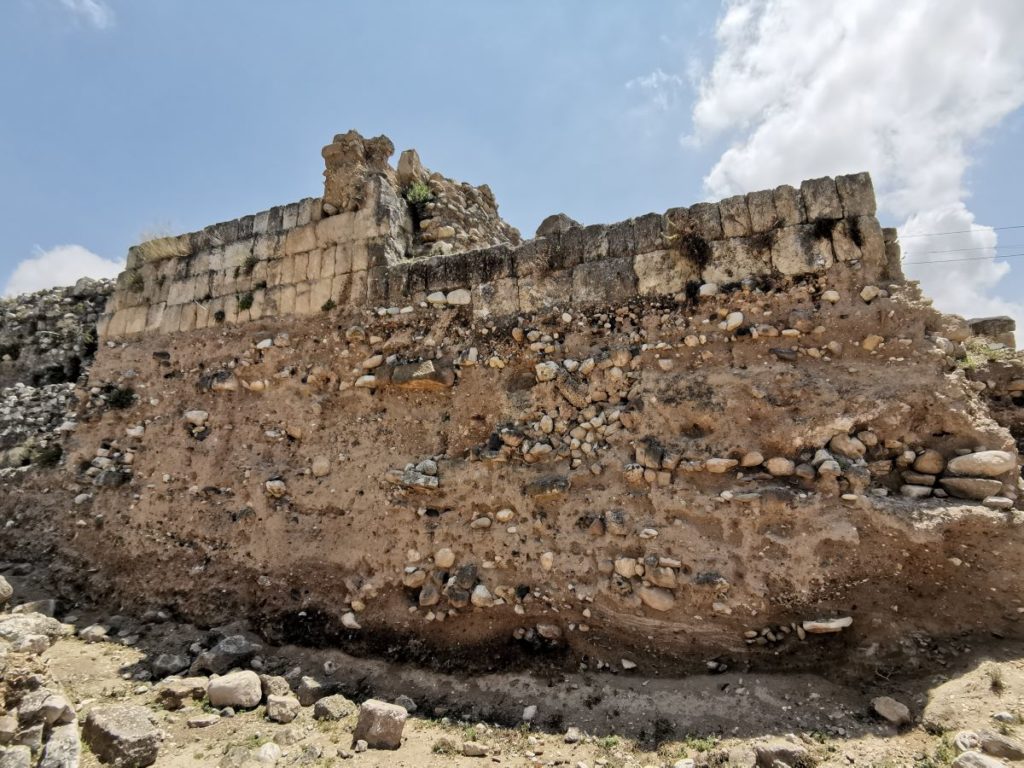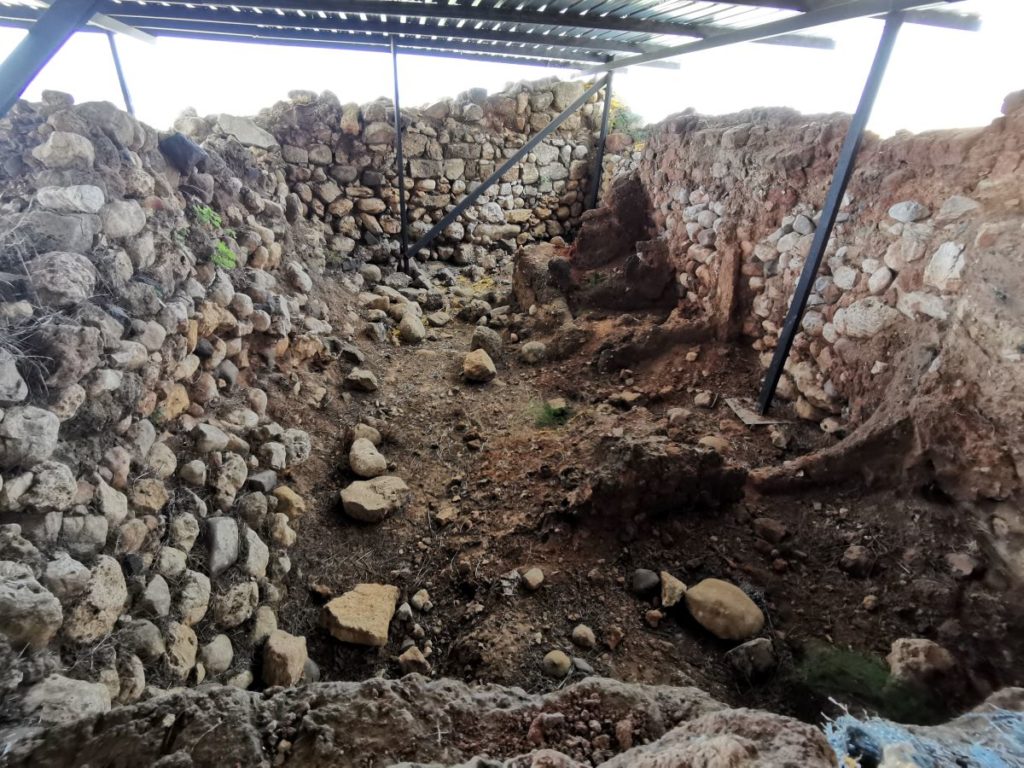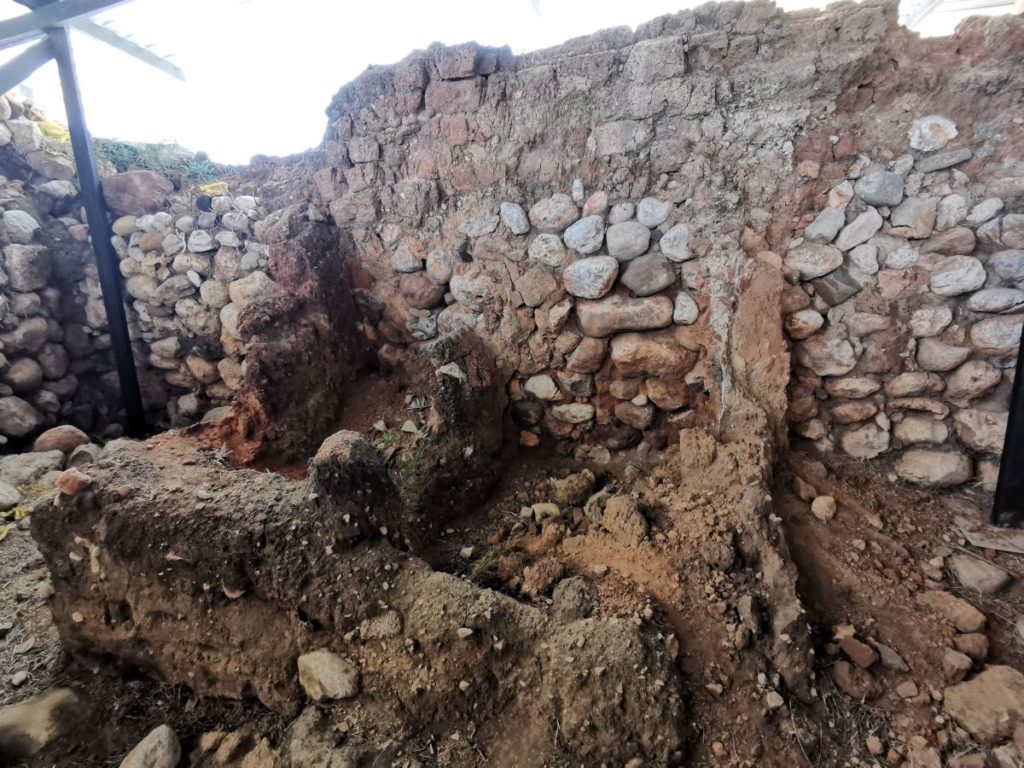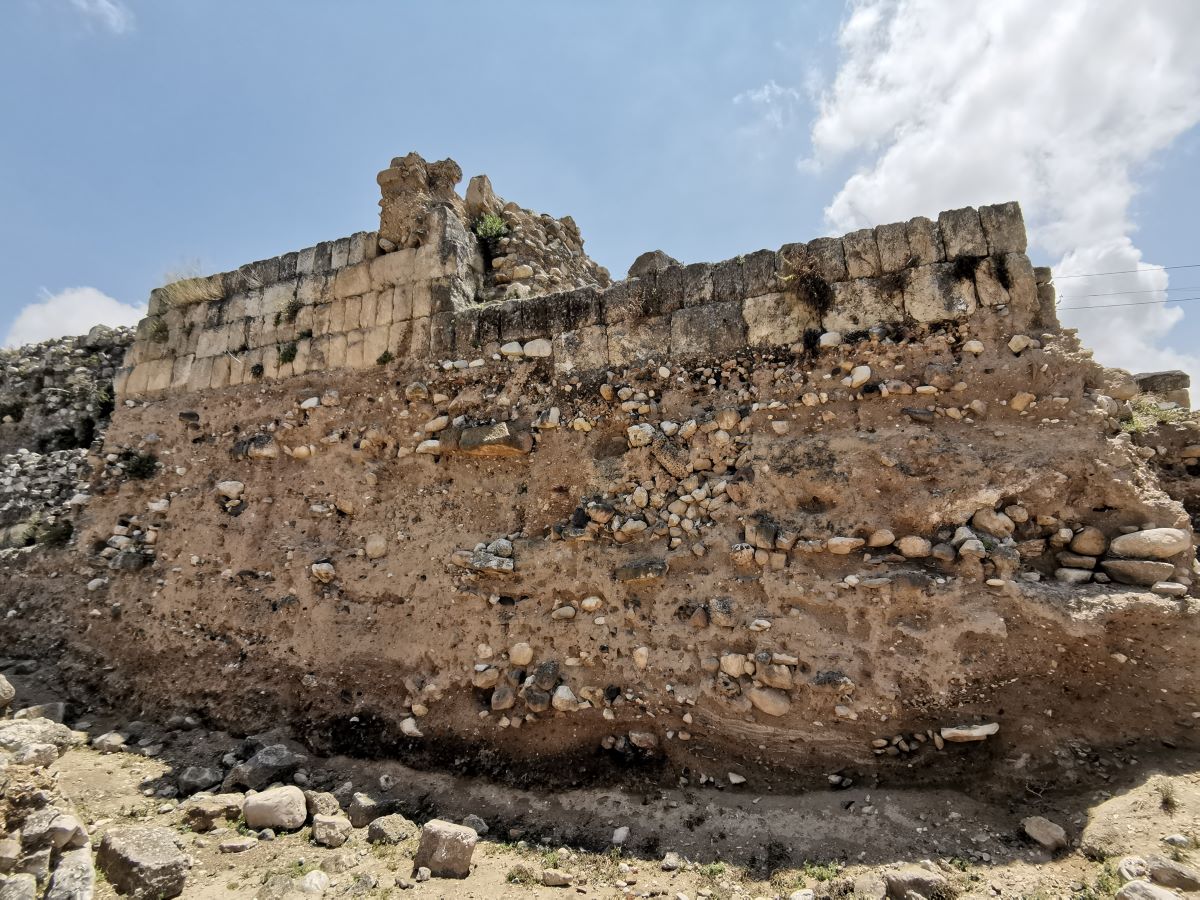Arqa town houses the most preeminent archaeological site in north Lebanon.
While the whole area surrounding Arqa holds precious archaeological treasures, the main part that was studied since 1972 is the ancient hill, known as Tell Arqa. The excavation missions revealed a long sequence of occupation from the Neolithic era to the Mamluk period, which represents almost the entire history of the country.
This article highlights the site of Tell Arqa and its history.
Location
Arqa is located south of the Nahr el-Kebir, the River Eleutheros of the classical period, which constitutes the present border between Lebanon and Syria. It is also the outlet of the “Homs Gap” into the Mediterranean, and a main way of communication with inland Syria. Thus, the location of Arqa was militarily strategic that led consecutive civilizations to use it as a vital point of control throughout the centuries.
Moreover, the fertile soil, as well as the abudancy of water helped greatly in developing farming and trade activities, as well as growing an important settlement.
Toponym
Arqa was mentioned under different designation since antiquity by successive civilizations:
19th century BC, mentioned as Irqata in the Egyptian Execration Texts (inscriptions of Egypt’s enemies’ names on pottery).
12th century BC, mentioned as Irqata in the Egyptian Amarna letters. The title of the clay tablet letter is “The City of Irqata to the King”, and addressed to the Pharaoh Amenhotep III or Akhenaten to pledge loyalty and ask for protection.
9th century BC, mentioned as Irqanatu by Assyrian king Shalmaneser III when describing a coalition of 12 kings that he fought at the battle of Qarqar – Arqa was one of those opponents to the king that sent 10,000 soldiers and 10 chariots.
8th century BC, mentioned as Arqâ by Assyrian king Tiglath-Pileser III where he used the area to resettle deportees from other parts of his kingdom.
5th century BC, mentioned in The Book of Genesis, 10:17 as the following “….the Arkites, those living in Lebanon north of Sidon…” – can the Arkites refer to the settlers of Arqa? This remains debatable.
1st century BC – 2nd century AD, known as Caesarea Ituraeorum (Iteruans) presumably for the reason that the Iteruans (Local nomadic tribes) were heavily invested in this area. It was also known as Caesarea ad Libanum or Arqa Caesarea. When it was turned into a tetrarchy, it became part of the Syria Phoenicia province and was called as Arca in Phoenicia.
3rd century AD, known as Colonia Caesarea ad Libanum, Arqa was turned into a Roman colony under Caracalla rule.
12th century AD, mentioned as Archis by William of Tyr who was a chronicler during the crusader period.
12th century AD onwards, Arqa becomes the official designation.
Historical Background
6th century BC, the area housed several workshops of flint and obsidian, but not a settlement.
3rd – 2nd millennium BC, a prosperous settlement was developed on the Tell following the agricultural colonization and the intensive occupation of the Akkar plain began.
15th century BC, the site of Arqa was destroyed at the hands of Pharaoh Thutmose III. Consequently, its status was reduced in favor of an equivalent site – Tell Kazel – which grown to be the main Egyptian center in the region.
9th – 8th century BC, Arqa became the seat of a small and short-lived Phoenician kingdom – the invasion of the area by the Assyrians put an end to the Phoenician settlement.
5th century – 3rd century BC, Arqa was small village under Persian rule with no significant role.
3rd century – 2nd century BC, Arqa became a densely settlement during the Hellenistic era.
1st century BC – 6th century AD, a new settlement was developed on the plain of Arqa, thus the Tell was gradually abandoned and on its top a temple was presumably erected under Roman rule: This is attested by the many granite columns and temple-like elements found on site. The edifice was dedicated to Venus Lugens – the city’s tutelary goddess who appeared on the minted coins of Arca.
The city was also the birthplace of Emperor Marcus Aurelius Severus Alexander in 208 AD.
Around the 1st century AD, Arqa became the seat of a Christian bishop in the Roman province of Phoenicia Prima, a suffragan of the capital’s metropolitan see of Tyre, one of the most ancient dioceses in Christianity.
6th century – 10th century AD, Arqa became a fortified city during the Arab period.
10th century AD, Arqa was taken by Byzantine Emperor Nikephoros II Phokas.
11th century AD, Arqa served as a base for the counts of Toulouse during the crusader period, as it was one of the keys to the defense of Tripoli.
1289 AD, Arqa lost all importance after the fall of Tripoli to the Mamluks.
1972 AD onwards, Arqa site is excavated for the first time and studied by archaeologis.
Structures
The site features the remnants of structures that testify to several sequences of occupation of the site. It is important to mention that the site was, at different stages, unoccupied due to political and military factors.
What can be seen today on site are the following elements:
Settlements – Remnants of the Early Bronze Age city (3300 – 2000 BC) can be seen on site. All excavated structures belong to a dwelling quarter of densely built houses separated by a narrow, zigzag-shaped street. Houses had mud-brick walls, with wooden beams extensively used as a major material for the internal sections. Houses had an upper story used as living space, as well as a granary that acted as a silo for long term preservation, mainly for the grain to be sown the next year.
Fortifications – Military-like foundations can be seen on top of the Tell, such as a defensive walls and structures.
Pottery Debris – thousands of pottery shreds can be seen all over the site, which testifies to its significant production. The main pottery workshops – dating to the Middle Btonze Age (2000 – 1800 BC) were removed upon excavation to reach the Early Bronze Age city (3300 – 2000 BC) levels beneath them.
Karim Sokhn
Tour Operator & Tour Guide
References
Historical Genesis: From Adam to Abraham.
The Table of Nations in Genesis 10–Its Content Allen P. Ross.
Tell Arqa: A Prosperous City during the Bronze Age, Jean-Paul Thalmann.
Les Ituréens et la présence arabe au Liban du IIe sièclea.C. au IVe siècle p.c.Julien Aliquot.
The Routledge Handbook of the Peoples and Places of Ancient Western Asia, From the Early Bronze Age to the Fall of the Persian Empire, Trevor Bryce.
